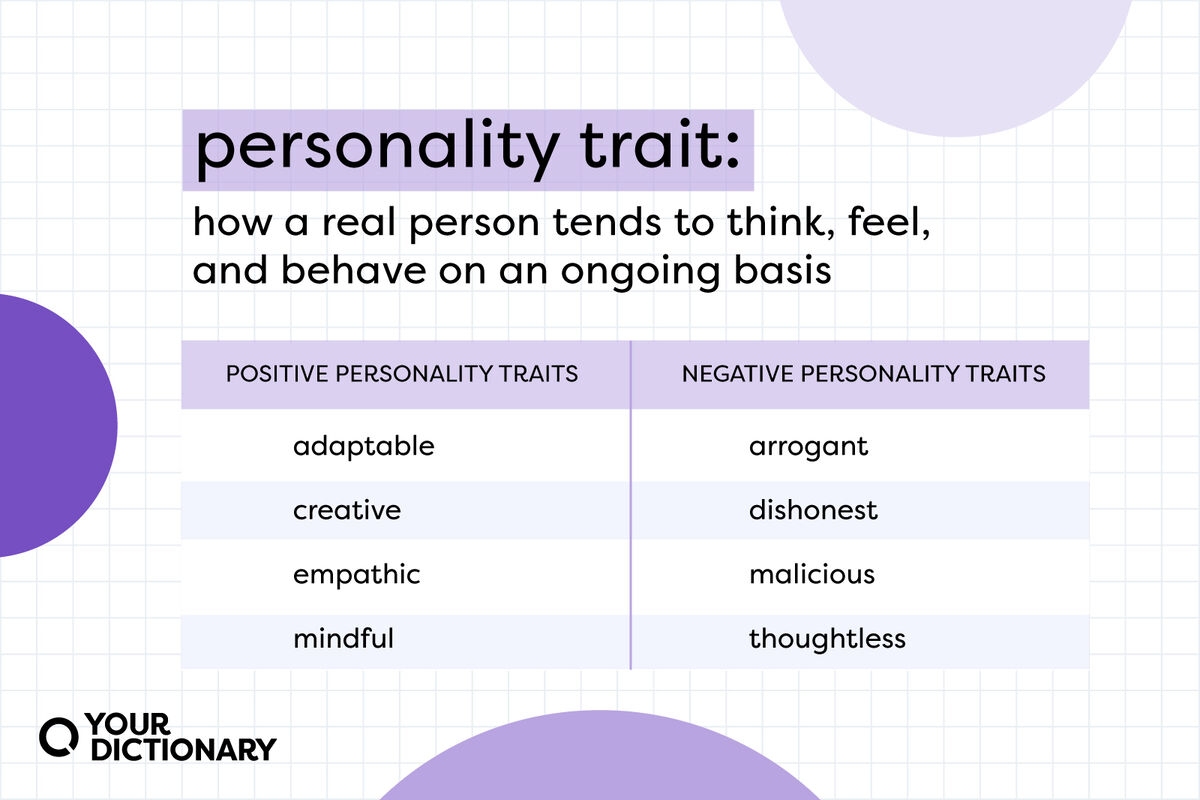
Everyone has that one amazing friend who’s funny, smart, generous, and creative — in fact, just being around them makes you feel funny, smart, generous, and creative too. But what makes someone’s personality so attractive? Are they just a generally cool person, or is their particular set of personality traits just irresistible?
What Are Personality Traits?
A personality trait describes how a person tends to think, feel, and behave on an ongoing basis. Personality traits are characteristic of enduring behavioral and emotional patterns, rather than isolated occurrences.
For example, anyone can occasionally have a bad day and make a snappy remark. When this happens in isolation, it doesn't reflect a personality trait. However, when someone's typical behavior is to snap at people rather than communicating politely, then “irritable” is likely one of their personality traits.
The Big Five Personality Traits
While there are hundreds of different personality trait examples that describe a person, psychologists often list five main personality traits, called the Big Five. They include:
- conscientiousness - the degree to which a person prefers to plan ahead rather than being spontaneous
- agreeableness - how strongly a person tends to be kind, sympathetic, and helpful to others
- neuroticism - the extent to which someone is inclined to worry or be temperamental
- openness - the extent to which a person has an appreciation for a variety of experiences
- extroversion - the extent to which a person tends to prefer being sociable, outgoing, and talkative
The combination of these traits can determine whether you are introverted or extroverted, open to new experiences or fearful or the unknown, agreeable or temperamental, and more.
Personality Traits List
It would be nice if we could capture the entire human experience into five simple words. While the Big Five personality traits help us broadly define and explore one’s personality, there are many more examples of personality traits — both positive and negative.
Examples of Positive Personality Traits
When someone always tells the truth, honesty is one of their personality traits. When they are the first to volunteer their time, you can remark on their generosity.
A pattern of positive behavior and attitude leads to a positive personality, marked by positive personality traits. These traits may include:
- accepting
- adaptable
- affable
- broad-minded
- charismatic
- compassionate
- competent
- confident
- congenial
- courageous
- creative
- determined
- discreet
- driven
- empathic
- enthusiastic
- exuberant
- fair
- friendly
- gregarious
- helpful
- honest
- humble
- independent
- insightful
- intelligent
- kind
- loyal
- mindful
- optimistic
- patient
- persistent
- precise
- reliable
- responsible
- sociable
- sympathetic
- tolerant
- trustworthy
- understanding
Examples of Negative Personality Traits
People are generally not all good or all bad, or all positive or all negative. Chances are that people have at least a few negative personality traits. (If any of these sound familiar, consider them an opportunity for personal growth.)
- aggressive
- apathetic
- argumentative
- arrogant
- boorish
- bossy
- callous
- conceited
- cowardy
- dishonest
- disloyal
- disrespectful
- finicky
- forgetful
- greedy
- impatient
- impulsive
- indecisive
- jealous
- lazy
- malicious
- manipulative
- obnoxious
- pessimistic
- picky
- reckless
- rigid
- rude
- sarcastic
- self-centered
- selfish
- slovenly
- sneaky
- stingy
- surly
- thoughtless
- uncertain
- unfriendly
- unpredictable
- vulgar
More Ways To Determine Personality Types
Identifying an individual's personality style is not an easy task. Personality is a complicated construct influenced by many factors. There are many ways to assess and label personality types, with each assessment measuring specific variables.
- Some personality assessments group personalities into four types based on letter labels (Type A, Type B, Type C, and Type D).
- The DISC theory of personality groups people into four types (Dominance, Influence, Steadfastness, and Conscientiousness).
- According to the Myers-Briggs Type Indicator, there are sixteen different types, including ESTJ, INTP and 14 others.
Personality Traits for Characters
While personality traits describe real people, character traits describe fictional characters. Authors use character traits, also known as characterization, to guide story development and to move their plot forward.
For example, a cowardly character may finally find the bravery they need by the end of a story. A self-centered character may learn the value of sharing with others in order to fulfill their goal.
When these traits are negative and hold a character back from their goal, they’re called character flaws. A character must overcome these flaws in order to achieve their goals — unless the story is a tragedy, and their character flaw is the cause of their downfall.
It’s more difficult for real people to grow and change their personality traits (Wouldn’t it be nice if we could resolve our biggest personality flaws in a few pages?). However, we can take some cues from these fictional people and their character traits in order to achieve our own goals.